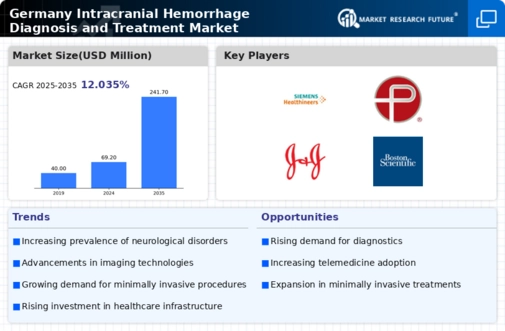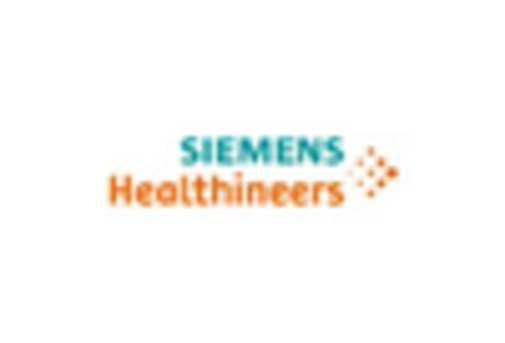The competitive landscape of the Germany Intracranial Hemorrhage Diagnosis and Treatment Market is characterized by rapid advancements in technology and an increasing focus on improving patient outcomes through innovative diagnostic and therapeutic solutions.
The market is comprised of various players, including established companies and emerging firms, which are all striving to gain a competitive edge through product development, strategic partnerships, and expansion initiatives.
Key trends such as the integration of artificial intelligence in imaging techniques, the rise in minimally invasive surgical procedures, and the growing demand for advanced diagnostic tools are reshaping the market dynamics.
Additionally, regulatory considerations and the emphasis on cost-effective care are influencing market strategies, leading to a race among companies to enhance their offerings and establish a stronger market presence.
Siemens Healthineers stands out prominently in the Germany Intracranial Hemorrhage Diagnosis and Treatment Market as a significant player known for its advancements in imaging and diagnostic technology.
The company specializes in various solutions that are pivotal for the accurate diagnosis and treatment of intracranial hemorrhages, leveraging its cutting-edge imaging systems that enhance visualization and precision.
Siemens Healthineers has established a strong market presence in Germany through continuous innovation, providing state-of-the-art computed tomography and magnetic resonance imaging systems, which are crucial for timely diagnosis and intervention.
Their focus on research and development, along with collaborations with healthcare providers, ensures that they remain at the forefront of technological advancements, thereby strengthening their market position and fostering a reputation for reliability and efficiency in critical diagnosis and treatment scenarios.
Terumo Corporation has made significant strides in the Germany Intracranial Hemorrhage Diagnosis and Treatment Market by offering a range of specialized products and services that enhance therapeutic procedures.
The company is recognized for its advanced catheter technologies and neurovascular intervention devices, which play an essential role in the treatment of intracranial hemorrhages. Terumo Corporation's presence in the German market is augmented by its commitment to innovation and quality, ensuring that healthcare professionals have access to reliable and effective therapeutic options.
The company's strategic investments and potential mergers and acquisitions reflect its intent to expand its market footprint and enhance its service offerings.
Furthermore, Terumo's focus on building partnerships with healthcare institutions for research and development contributes to their strengths, as they continue to adapt their product line to meet the evolving needs of the medical community in Germany effectively.















Leave a Comment